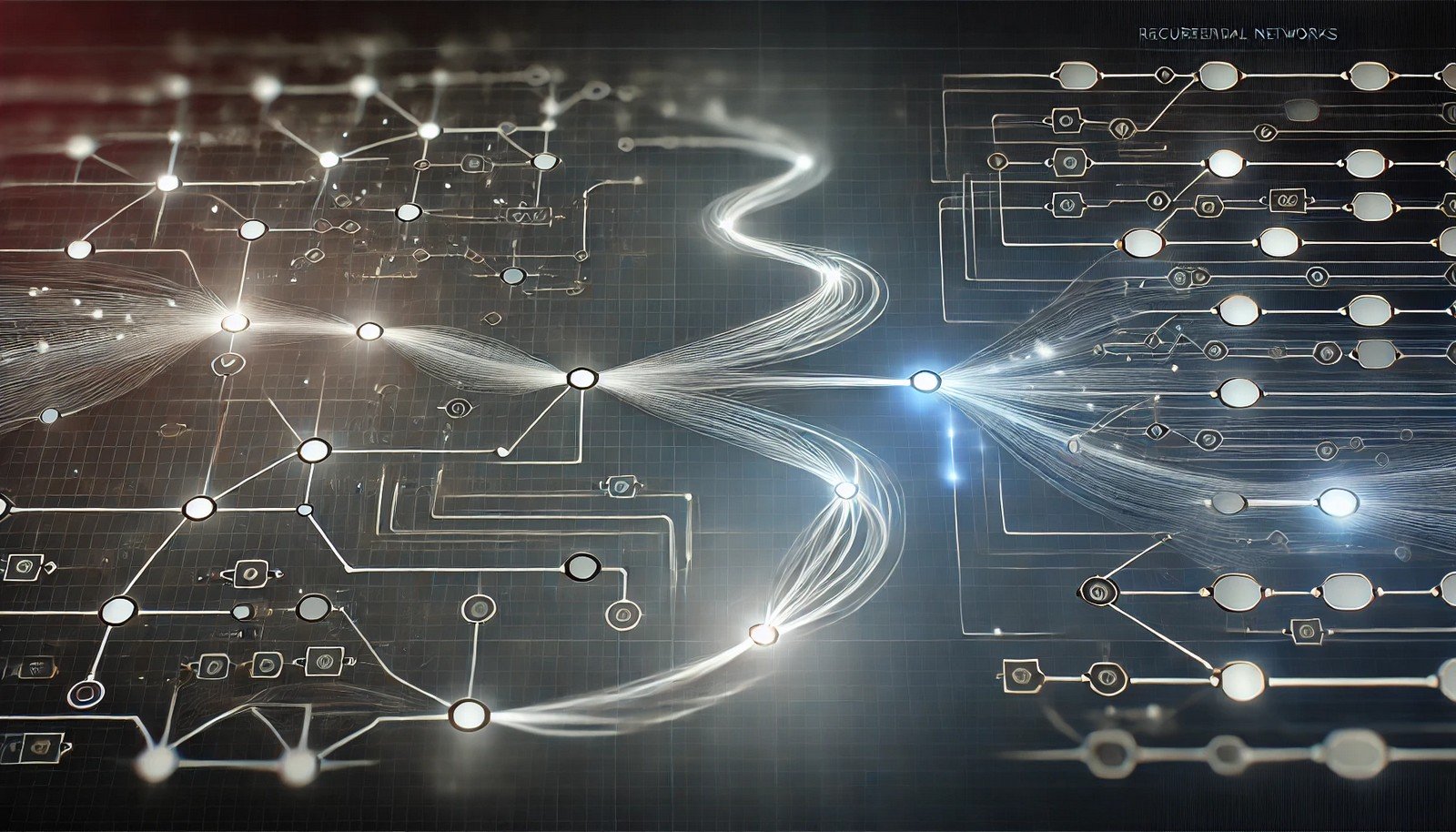Recurrent Neural Networks (RNN)

Quick Navigation:
- Recurrent Neural Networks Definition
- Recurrent Neural Networks Explained Easy
- Recurrent Neural Networks Origin
- Recurrent Neural Networks Etymology
- Recurrent Neural Networks Usage Trends
- Recurrent Neural Networks Usage
- Recurrent Neural Networks Examples in Context
- Recurrent Neural Networks FAQ
- Recurrent Neural Networks Related Words
Recurrent Neural Networks Definition
Recurrent Neural Networks (RNNs) are a type of artificial neural network designed to recognize patterns in sequences of data, such as time series or natural language. They utilize feedback loops, allowing information from previous steps to influence current processing. This feature makes RNNs well-suited for tasks requiring memory of previous inputs, like speech recognition, language translation, and predictive text. However, they can suffer from issues like vanishing gradients, which newer architectures, such as LSTM (Long Short-Term Memory) and GRU (Gated Recurrent Unit), help address.
Recurrent Neural Networks Explained Easy
Imagine you’re reading a story. Each sentence makes sense because you remember what came before. Similarly, RNNs help computers remember earlier parts of data sequences, making them better at understanding language or predicting patterns over time.
Recurrent Neural Networks Origin
The concept of RNNs emerged in the 1980s as a response to the limitations of feedforward neural networks in processing sequential data. Researchers recognized that many real-world problems involve sequences where each part depends on previous parts, which led to the development of RNNs.
Recurrent Neural Networks Etymology
"Recurrent" refers to the network's feedback loops, where outputs are used as part of future inputs to enhance memory and sequence processing.
Recurrent Neural Networks Usage Trends
RNNs gained prominence with advances in computing power and data availability. They are widely used in natural language processing, speech-to-text applications, and time series forecasting. However, with the rise of transformers, RNNs have seen a decline in popularity for some complex tasks but remain essential in fields like robotics and sensor data analysis.
Recurrent Neural Networks Usage
- Formal/Technical Tagging:
- Machine Learning
- Deep Learning
- Sequence Modeling - Typical Collocations:
- "RNN model"
- "sequential data processing"
- "time series with RNN"
- "RNN in language modeling"
Recurrent Neural Networks Examples in Context
- An RNN model can predict the next word in a sentence by learning from large amounts of text.
- Time series forecasting for stock prices often uses RNNs due to their ability to handle sequences.
- RNNs in speech recognition systems help in converting spoken words into text by understanding sequential patterns in audio.
Recurrent Neural Networks FAQ
- What is a Recurrent Neural Network?
A Recurrent Neural Network (RNN) is a neural network architecture that processes sequential data using feedback loops. - How are RNNs different from other neural networks?
Unlike feedforward networks, RNNs have connections that form cycles, enabling them to retain memory across time steps. - Where are RNNs commonly used?
RNNs are commonly used in language processing, time series analysis, and audio recognition. - What are the limitations of RNNs?
RNNs can suffer from vanishing gradient problems, making them hard to train over long sequences. - How do LSTM and GRU improve RNNs?
LSTM and GRU are specialized RNN types designed to handle long-term dependencies and alleviate the vanishing gradient issue. - Why are RNNs suitable for language tasks?
Language involves sequences, and RNNs retain information across words, making them ideal for language understanding. - Can RNNs be used for image processing?
RNNs are not typically used for static images but can process sequences of images, like in video data. - What is the vanishing gradient problem in RNNs?
It’s a training difficulty where gradients shrink over time, impeding long-sequence learning. - Are RNNs still widely used?
Although transformers have overtaken RNNs in some areas, RNNs are still prevalent in real-time applications. - How does RNN handle time series?
By processing each data point sequentially and retaining past information, RNNs are highly effective in time series prediction.
Recurrent Neural Networks Related Words
- Categories/Topics:
- Deep Learning
- Natural Language Processing
- Time Series Analysis
Did you know?
Recurrent Neural Networks are foundational in real-time language translation applications. Using large datasets, RNNs can translate languages almost instantaneously, enhancing cross-cultural communication and accessibility worldwide.
PicDictionary.com is an online dictionary in pictures. If you have questions or suggestions, please reach out to us on WhatsApp or Twitter.Authors | Arjun Vishnu | @ArjunAndVishnu

I am Vishnu. I like AI, Linux, Single Board Computers, and Cloud Computing. I create the web & video content, and I also write for popular websites.
My younger brother, Arjun handles image & video editing. Together, we run a YouTube Channel that's focused on reviewing gadgets and explaining technology.



Comments powered by CComment